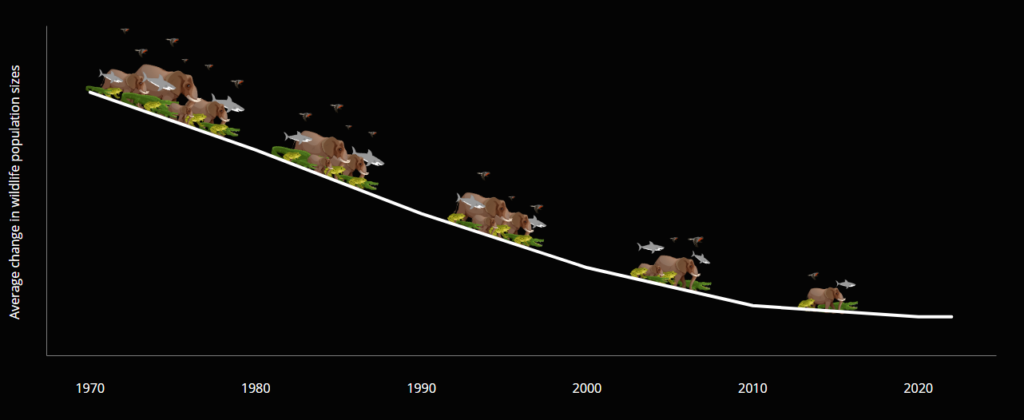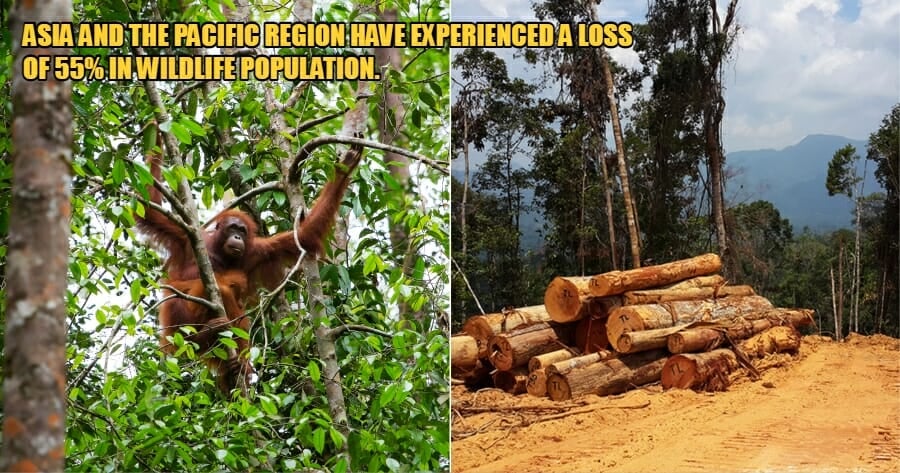The global wildlife population has declined by 69% in over 50 years, as according to the Living Planet Report 2022 by the World Wildlife Fund (WWF).
Using the Living Planet Index (LPI), they have been tracking the populations of mammals, birds, fish, reptiles and amphibians, and have revealed a 69% decrease in wildlife populations since 1970.
The report highlights one of the causes of this, which is the continuous human activities of exploring jungles on an industrial scale that exceeds the appropriate limit to the point of pollution.

Latin America and the Caribbean have shown the highest decline in wildlife populations, at 94% in 48 years, especially due to deforestation of the world’s largest rainforest, the Amazon.
Africa comes in at the second highest, with a 66% decline while Asia and the Pacific region have experienced a loss of 55% in wildlife population. The Americas, on the other hand, is at the lowest with 20%.

The total loss of the global wildlife population is allegedly equal to the human population of Europe, Africa, Oceania and China.
Scientists now believe that we may be experiencing the largest mass extinction of animals since the age of the dinosaurs, though this time it’s all caused by humans, and are urging world leaders to come to an agreement to reduce the rate of carbon emissions as an initiative to prevent the further destruction of the environment and wildlife habitats.
Stay tuned for more updates.
Also read: Over 7,000kgs of Human Trash Have Been Left Behind On Mars



































